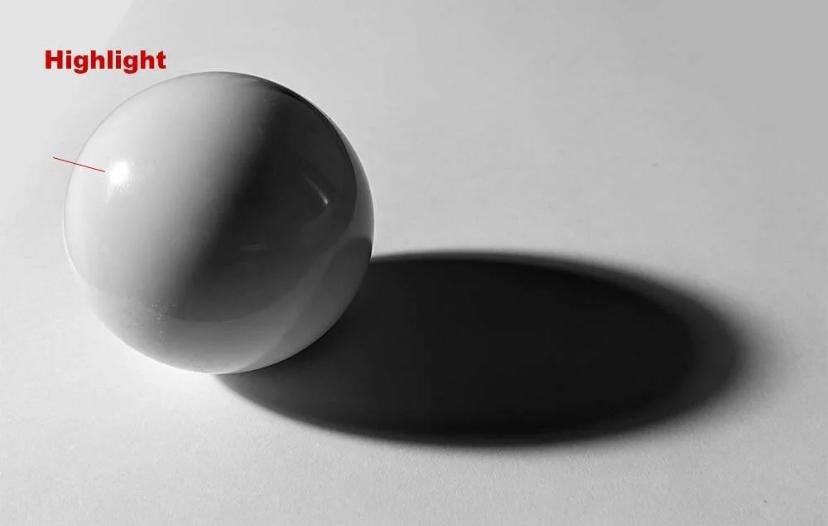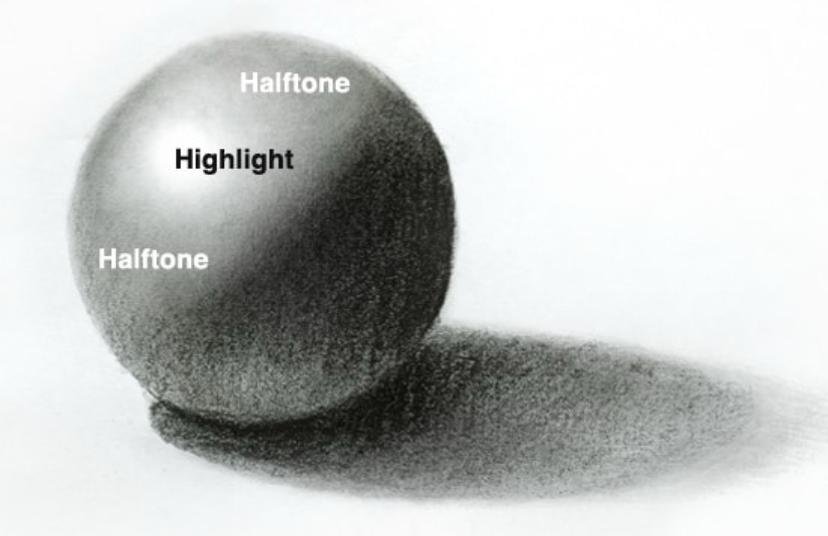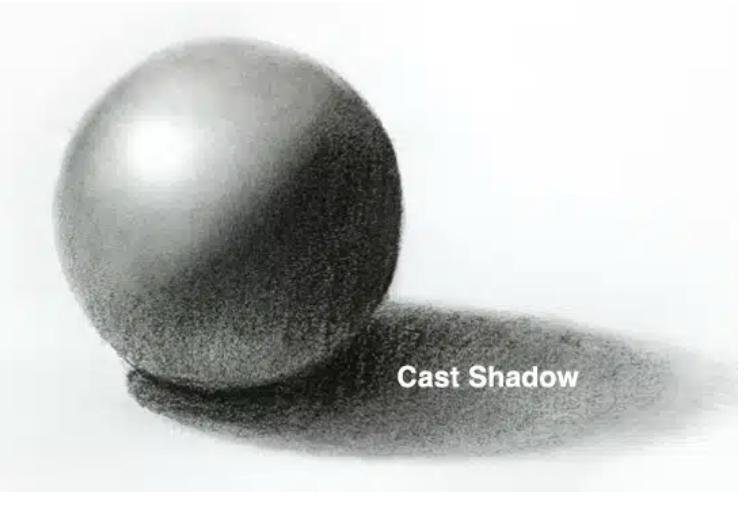
Key Insight: Mastering the interplay of light and shadow is essential for conveying three-dimensional form, guiding the viewer’s eye, and infusing sketches with mood and depth.
Introduction
In sketching, light defines surfaces and reveals form, while shadow describes the absence or redirection of light. Together, they transform a flat drawing into a convincing illusion of volume and space.
Fundamental Concepts
Light travels in straight lines; where it strikes an object, it creates areas of illumination and casts shadows behind and beneath the form. Sketching these tonal relationships accurately is called chiaroscuro (Italian: “light–dark”), a technique dating to the Renaissance that emphasizes strong contrasts to model three-dimensional objects11.
The Zones of Light and Shadow
A simple sphere illustrates five principal tonal areas:
| Zone | Description |
|---|---|
| Direct Light | The side facing the light source; typically the lightest continuous area (“light side”). |
| Highlight | The brightest point where light reflects most intensely (appears almost white) |
| Mid-tone | The gradual transition between light and shadow |
| Core Shadow | The darkest band on the form where neither direct nor reflected light reaches (“terminator”) |
| Cast Shadow | The silhouette the object projects onto an adjacent surface; its edge sharpness depends on light hardness2 |
Types of Shadows

Accurate shadow rendering elevates realism:
- Form Shadow: Soft transition on the object’s surface away from the light source, revealing curvature3.
- Occlusion Shadow: Deepest, smallest area in crevices or where objects touch, receiving minimal stray light.
- Reflected Light: Subtle illumination on the shadow side caused by light bouncing from nearby surfaces4.
- Cast Shadow: Distinct shape on a separate plane; its length, direction, and edge softness depend on the light angle and diffusion2.

Chiaroscuro and Edge Treatment
- Hard Edges at core shadows and undiffused cast shadows convey abrupt transitions and solid forms.
- Soft Edges at halftones and the tail of cast shadows create gentle gradations and atmospheric effects1.
Practical Techniques
- Shadow Mapping: Begin with a pen or marker to block in pure dark shapes (form, core, cast), then hatch mid-tones and reserve highlights. This clarifies tonal structure before adding subtle values1.
- Hatching and Cross-Hatching: Use parallel lines whose density and overlap build up form shadows; change line direction to follow contours.
- Blending Tools: Paper stumps or tortillons soften transitions between mid-tones and core shadows, but maintain crisp highlights with erasers or negative drawing.
- Layered Pencil Grades: Start with harder pencils (2H–2B) for outline and halftones, switch to softer grades (4B–6B) for deep shadows and accents1.
Exercises for Mastery
- Single-Light Study: Arrange a simple form (sphere or apple) under a desk lamp. Sketch shadow shapes first, then fill in tonal zones step by step.
- Value Scale Rendering: Create a strip of ten boxes transitioning from white to black; practice matching each box within your drawing to develop tonal discrimination.
- Contour-Aligned Hatching: Hatching lines that follow form contours reinforce volume. Draw a cylinder and hatch along its curve to see the effect.
Conveying Mood and Depth
By manipulating light intensity, direction, and shadow contrast, sketches can evoke different atmospheres:
- High Contrast (Tenebrism): Dramatic light emerging from deep darkness for tension and focus1.
- Soft Diffuse Light: Gentle transitions for calm, ethereal effects.
Conclusion
Understanding and applying light and shadow principles in sketching unlocks the ability to render lifelike forms, guide visual emphasis, and imbue sketches with emotional resonance. Consistent practice—through shadow mapping, controlled hatching, and purposeful edge treatment—builds the artist’s intuitive grasp of chiaroscuro, transforming simple lines into compelling, three-dimensional imagery.
- https://willkempartschool.com/how-to-shade-a-drawing-light-shadow-part-2/
- https://willkempartschool.com/a-beginners-guide-to-shadow-light-part-1-drawing/
- https://bingedrawing.com/basics/types-of-shadows/
- https://www.youtube.com/watch?v=_p_qMfnQvnY
- https://www.numberanalytics.com/blog/mastering-chiaroscuro-in-imagination-drawing
- https://www.clipstudio.net/how-to-draw/archives/163236
- https://www.pinterest.com/emilygordonart/seven-types-of-light-and-shadow/
- https://www.britannica.com/art/chiaroscuro
- https://www.youtube.com/shorts/YPhjtor9koE
- https://www.aela.io/en/blog/all/light-shadow-chiaroscuro-art
- https://www.learntopaintpodcast.com/blog/understanding-light-amp-shadow-terminology
- https://www.jacksonsart.com/blog/2025/05/20/chiaroscuro-techniques-for-painting-drawing-and-printmaking/
- https://drawpaintacademy.com/light-and-shadow/
- https://www.youtube.com/watch?v=K0AOQtspEvY
- https://en.wikipedia.org/wiki/Chiaroscuro
- https://www.youtube.com/watch?v=MBnx0wyR4Yw
- https://www.youtube.com/shorts/WwNEfLyOl44
- https://study.com/academy/lesson/chiaroscuro-in-art-definition-technique-artists-examples.html
- https://www.pinterest.com/lydiamartin8/light-and-shadow-drawing/
- https://arspictoria.com/techniques/drawing-on-toned-paper/
